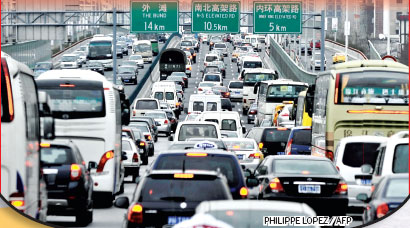Traffic jams serious in Shanghai
Updated: 2012-08-31 07:29
(HK Edition)
|
|||||||

Urban expressways in Shanghai, as many claim, don't deserve their name. During peak hours, computers face congested traffic over 15 percent to 25 percent of their route. The average vehicle speed on main roads in rush hours in Shanghai is only 15 to 16 kilometers per hour. It's even slower for buses, according to the local newspaper Oriental Morning Post.
"We notice that the traffic jams last longer than they used to and the situation in the viaducts has also been deteriorating, especially during the weekends this year," said Shen Xiaosu, deputy director of Shanghai Urban Construction and Communications Commission.
Confronted with more crowded roads and the predictions that 2 million cars with Shanghai licenses will be operating on the roads in 2015, 20 percent higher than this year, the municipal government plans to release a new city transport white book, a decade after the first version in 2002.
Middle scale public transportation, with the capacity to carry 10,000 to 30,000 people per hour is included in the new transport white book research for the first time and is supposed to include current buses and subways. The north areas of the Bund and Shanghai Hongqiao Central Business District already have plans to develop Rapid Transit and trams.
"The transportation system in Shanghai is faced with a heavier burden," said Xue Meigen, the director of Shanghai City Transportation Planning Institute, "As the city transportation now has to satisfy the need in the suburbs and even the whole Yangtze River Delta with the city expanding."
While Shanghai's population grew by 43 percent in the last 10 years, the traffic witnessed a 53 percent increase, among which registered vehicles have doubled and cars tripled, though the average prices of new license plates auctioned surpassed 60,000 yuan this May.
However, the traffic capacity has been increased only by 110 percent, insufficient for the increased demand.
(HK Edition 08/31/2012 page4)